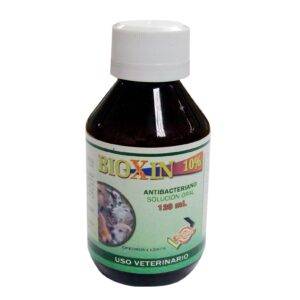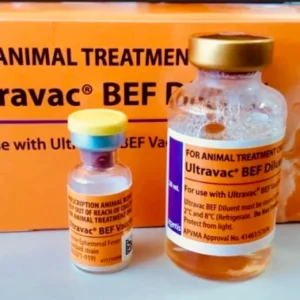Dexafort Injection
Dexafort Injection is a veterinary medication containing Dexamethasone, a potent corticosteroid used in animals, including horses, to treat inflammatory, allergic, and autoimmune conditions. Dexafort is specially formulated to have both rapid and long-lasting effects due to its combination of dexamethasone derivatives, which allows for both immediate relief and prolonged action. dexafort injection for cat
Composition:
Dexamethasone-21-isonicotinate: A longer-acting derivative of Dexamethasone that provides extended anti-inflammatory effects.
Dexamethasone sodium phosphate: A rapidly acting form of Dexamethasone that offers quick relief from inflammation.
This combination allows Dexafort to deliver immediate therapeutic effects while also offering sustained action for several days, reducing the need for frequent injections.
Dexafort Injection Uses in Horses:
Dexafort Injection is widely used to manage a variety of conditions in horses due to its anti-inflammatory, immunosuppressive, and anti-allergic properties. The main uses include:
Musculoskeletal Inflammation: Effective in treating inflammation of joints, tendons, and muscles caused by conditions like arthritis, bursitis, and tenosynovitis.
Allergic Reactions: Used to manage acute allergic reactions such as those caused by insect bites, environmental allergens, or food sensitivities.
Respiratory Conditions: Horses suffering from respiratory issues like chronic obstructive pulmonary disease (COPD) or heaves may benefit from Dexafort, as it reduces airway inflammation and improves breathing.
Autoimmune Diseases: Helps manage autoimmune conditions where the horse’s immune system is attacking its own tissues.
Dermatological Conditions: Used to treat inflammatory skin conditions such as allergic dermatitis.
Eye Conditions: Can be prescribed for horses suffering from uveitis or other inflammatory eye conditions.
Shock and Trauma: In emergency situations, Dexafort may be used to stabilize the horse and manage shock.
Dexafort Injection Administration:
Form: Dexafort is administered as an injectable suspension.
Dosage: The dosage varies based on the horse’s size, the severity of the condition, and the veterinary recommendations. Typically, it is administered in a single dose, but additional doses may be required depending on the condition.
Route of Administration: It can be given via intramuscular (IM) or subcutaneous (SC) injection. For rapid onset in acute cases, intravenous (IV) administration may be used, but this depends on veterinary discretion.
Mechanism of Action:
Dexafort works by inhibiting the production of substances in the body that lead to inflammation, such as prostaglandins and leukotrienes. It also suppresses the immune system’s activity, making it useful in conditions where the immune system is overactive, such as allergic reactions and autoimmune diseases. The dual action of rapid and long-lasting Dexamethasone forms helps provide both immediate and sustained relief from symptoms.
Duration of Action:
Dexafort is designed to have a prolonged duration of action, typically lasting for 3 to 4 days after a single injection, depending on the animal’s metabolism and the condition being treated. This extended effect reduces the need for repeated injections, which can be beneficial in managing chronic conditions. dexafort injection for cat
Side Effects:
While Dexafort is highly effective in managing inflammation and allergic responses, there are several potential side effects, particularly with long-term use:
Laminitis: Like other corticosteroids, prolonged or high-dose use of Dexafort increases the risk of laminitis, a painful inflammation of the hoof tissues.
Immunosuppression: Long-term use can suppress the immune system, making the horse more vulnerable to infections.
Delayed Wound Healing: Corticosteroids may slow the natural healing process of injuries and wounds.
Gastrointestinal Issues: Prolonged use can increase the risk of gastric ulcers or colic.
Increased Thirst and Urination: Horses may experience increased thirst (polydipsia) and urination (polyuria).
Behavioral Changes: Horses may become more irritable or exhibit hyperactivity while on corticosteroids.
Cushing’s Syndrome: Long-term use of corticosteroids can result in iatrogenic Cushing’s disease, which is characterized by weight gain, muscle wasting, and increased risk of infections.
Precautions:
Short-Term Use: Dexafort is recommended for short-term treatments to minimize the risk of serious side effects like laminitis, gastrointestinal problems, and muscle wasting.
Veterinary Supervision: Always use under the guidance of a veterinarian, particularly when determining the correct dosage and treatment duration. dexafort injection for cat
Pregnant Mares: Dexamethasone can cause premature labor or abortion, especially when administered in late pregnancy. Use with extreme caution in pregnant mares, and only under the advice of a veterinarian.
Pre-existing Conditions: Horses with conditions like gastric ulcers, metabolic disorders (e.g., Cushing’s disease), or infections may need alternative treatments or close monitoring during corticosteroid therapy.
Contraindications:
Systemic Infections: Dexafort should not be administered to horses with systemic bacterial, viral, or fungal infections unless they are receiving concurrent anti-infective therapy.
Hypersensitivity: Horses allergic to corticosteroids should avoid this medication.
Regular Veterinary Checkups: Horses on Dexafort, especially if used for extended periods, should have regular veterinary exams to check for side effects such as laminitis or immune suppression.
Blood Work: For long-term use, periodic blood tests may be recommended to monitor liver and kidney function, as corticosteroids can affect these organs.
Withdrawal Period:
If your horse is involved in competitive equestrian sports, it’s essential to be aware of the withdrawal period for Dexafort. Many regulatory bodies for equine sports have strict guidelines regarding corticosteroid use, and horses must be off the medication for a specific period before competing.
Differences Between Dexafort and Other Dexamethasone Products:
Dexafort vs. Dexacortyl, Dexa Plus, or Dexadreson: All these products contain Dexamethasone, but Dexafort is unique due to its dual-action formula, combining both fast-acting and long-acting Dexamethasone derivatives. This provides both immediate relief and prolonged action.
Dexafort vs. Dexa G Rapid: Unlike Dexa G Rapid, which contains both Dexamethasone and Gentamicin (an antibiotic), Dexafort does not have antibiotic properties and focuses purely on reducing inflammation and allergic responses. dexafort injection for cat
Storage:
Dexafort should be stored at room temperature and protected from light. It should not be frozen, as this can affect the stability of the product.
Where to Buy Dexafort Injection
Dexafort Injection is available through veterinary clinics, online veterinary pharmacies, or authorized veterinary suppliers. A prescription is usually required due to the controlled nature of corticosteroids. If purchasing online, ensure that the supplier is reputable and authorized to sell veterinary medications in your region.
Summary of Key Points:
Active Ingredient: Dexamethasone-21-isonicotinate and Dexamethasone sodium phosphate.
Uses: Treatment of inflammation, allergic reactions, respiratory conditions, autoimmune diseases, and shock.
Administration: Injectable (IM, SC, or IV) with both rapid and long-lasting effects.
Side Effects: Laminitis, immunosuppression, delayed healing, gastrointestinal issues, and behavioral changes.
Precautions: Short-term use recommended; caution with pregnant mares and pre-existing conditions.
Withdrawal Period: Necessary for competition horses. dexafort injection for cat





Reviews
There are no reviews yet.